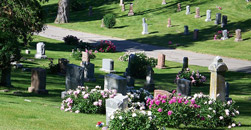Designing Learner-Centered Spaces
Apr 19, 2018By Eric Sheninger, Thomas C. Murray07/05/17Editor’s note: The following is excerpted from a chapter of the book, “Learning Transformed: 8 Keys to Designing Tomorrow’s Schools,” published by ASCD in June. The authors and publisher have given their permission to republish portions of chapter 4, “Designing Learner-Centered Spaces.” Ninety-nine percent of teaching spaces were anticipated either in an image of an ancient Syrian palace school 4,000 years ago or in the Greek amphitheater: rows or rings of seats meant to focus the attention of the many on the one. But education is not about transferring information from one to many; it is about learning within the student. When printed books were new, transferring information was vital, but today, information is ubiquitous and readily available, and students can pick it up when and where they want. Instead, the classroom ought to focus on assimilation and application of knowledge to new contexts. The teacher becomes the guide on the side, instead of the sage on the stage, requiring wholly new learning spaces and teaching techniques. — Eric MazurDesign Empowers LearningThe United States is home to nearly 100,000 public K–12 schools, which cover about 7.5 billion total square feet and 2 million acres of land (Bendici, n.d.). Approximately $2 trillion of net worth is invested in these school facilities, making this investment the largest educational investment in the nation. With the average age of schools in most districts between 30 and 50 years old, a large portion of this investment is now at risk due to age and lack of adequate maintenance (Nair, 2014). In the United States alone, in addition to the routine maintenance which totals hundreds of millions of dollars each year, over $12 billion is spent annually to renovate and build new schools (Abramson, 2012).With their average age in mind, most of today’s learning spaces were originally designed and built for teacher-centric learning environments, coined by Alfie Kohn (1999) as the “cells and bells” model. In ... (T.H.E. Journal)



